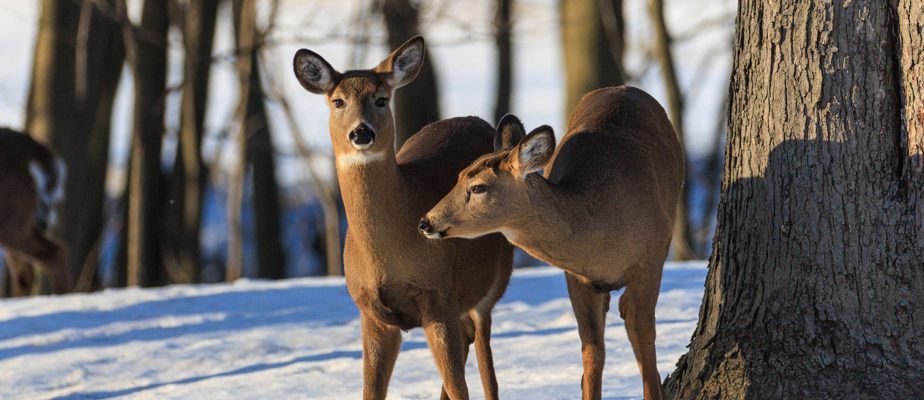It is not only in Longueuil where the overpopulation of white-tailed deer is a problem. But unlike the South Shore, the City of Montreal is doing nothing to stem the exponential growth in the number of animals in the east of the island.
There were 127 deer in this sector during the last count, carried out in February 2023 by the Ministry of the Environment, while a 2021 report recommended keeping only between 13 and 19.
Deer mainly live in the Pointe-aux-Prairies nature park, the Grou Coulee and the adjacent golf course, but they can also be seen in the Anjou golf area.
This week, in two hours, representatives of The Press were able to observe around twenty in these areas in the middle of the afternoon, particularly near the Des Trembles cemetery.
The number of collisions between cars and deer has increased in recent years: there have been 126 in five years on the island, including 37 in 2022, which left 5 people lightly injured, according to data from the Society of Deer. Quebec automobile insurance (SAAQ). No data is yet available for 2023.

Already, in 2021, an inventory had made it possible to count 64 deer, i.e. double the number of deer spotted during the previous count, carried out in 2017. A report commissioned by the City of Montreal then recommended a reduction of 70 to 80% of the herd. , therefore the slaughter of 45 to 51 animals.
“Urgency to act”
“Given the urgency to act and the recurrence of control actions, we recommend the application of a lethal method whose effectiveness has been demonstrated. White-tailed deer populations are able to rebound quickly following a reduction in numbers due to their demographic characteristics and possible immigration from surrounding areas. The population control program must therefore continue annually and must be updated with the results of annual monitoring of the deer population, until the ecological indicators of recovery of forest ecosystems reach their target. , the report says in the “Summary” section. However, the entire recommendations portion of the report was redacted before it was made public.
The report states that “the composition and structure of vegetation are already altered by two decades of chronic selective grazing,” which threatens the balance of the forest ecosystem.
One of the authors of the report, Jean-Pierre Tremblay, professor in the biology department at Laval University and director of the Forest Study Center, adds in an interview that deer can be vectors of the tick causing the disease. of Lyme, which therefore also makes it a public health issue.
This report was submitted to Montreal when Longueuil’s decision to cull deer in Michel-Chartrand Park aroused opposition from animal rights defenders, who took the city to court. Last October, the Court of Appeal confirmed Longueuil’s right to deer hunt, which will take place next fall.
Read “Longueuil will carry out felling next fall”
In the spring of 2022, the Montreal administration set up a working committee made up of white-tailed deer experts to develop an intervention plan. This document, which will include the actions to be implemented as well as the deadlines, is still in preparation, two years later.
“For the moment, one-off vegetation protection measures (fences) are put in place when the City is planting,” indicates a communications manager for the City of Montreal.
Why is it taking so long, and why is Montreal not taking action now that the courts have ruled on this matter?
“We are awaiting recommendations from the committee of experts mandated by the City. We evaluate all options and try to find the best solution that meets Montreal’s specificities. Finding a response adapted to our metropolis and the particular needs of the area requires a certain amount of analysis time,” responds press officer Béatrice Saulnier-Yelle. It was impossible to do an interview with the new manager of large parks on the executive committee, Laurence Lavigne Lalonde.
In the meantime, deer have been killed elsewhere in the greater Montreal area. Last November, the Société des establishments de plein air du Québec (SEPAQ) slaughtered 399 animals in the Îles-de-Boucherville and Mont-Saint-Bruno national parks, where they were in surplus.
At Mont-Saint-Bruno National Park, the herd had increased by 119% in two years. There are now only around fifteen animals there.
The collected game meat was donated to food banks.
Learn more
-
- 64
- Number of deer counted in 2021 in the east of the island of Montreal
SOURCE: Ministry of the Environment, the Fight against Climate Change, Wildlife and Parks
- 127
- Number of deer counted in 2023 in the east of the island of Montreal
SOURCE: Ministry of the Environment, the Fight against Climate Change, Wildlife and Parks
